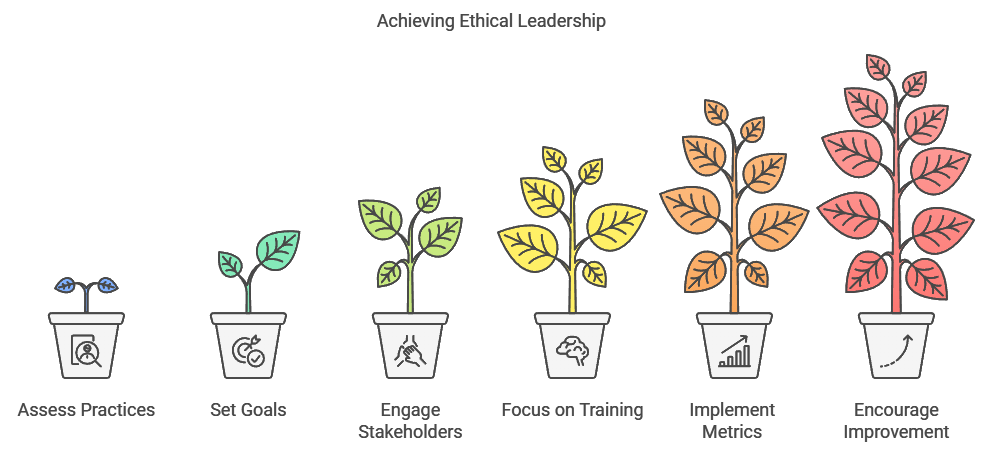Leading Change: How C-Suite Executives Can Drive Organizational Flourishing
Introduction
In today’s rapidly evolving business landscape, organizational flourishing is more than just an ideal; it’s a strategic necessity that can shape the future of enterprises. For C-Suite executives, the need to lead this transformative shift towards organizational flourishing is both urgent and vital. This SEO-optimized blog post provides top leaders with practical strategies and actionable insights to propel their companies towards a flourishing state—where profitability aligns with sustainability and employee well-being is given as much importance as financial success.
Section 1: What is Organizational Flourishing?
Organizational flourishing goes beyond traditional business success metrics, encompassing employee well-being, sustainable practices, and active community engagement. Here’s an in-depth look at what it involves:
- Definition and Context of Organizational Flourishing: In contemporary enterprises, organizational flourishing signifies a holistic thriving state where financial performance is synchronized with a positive social and environmental impact.
- Key Components of Organizational Flourishing:
- Promoting employee well-being and satisfaction.
- Implementing sustainable environmental practices.
- Enhancing active engagement with the community and stakeholders.
- Benefits of Organizational Flourishing:
- Builds enhanced company reputation and increases brand loyalty.
- Drives increased innovation and adaptability.
- Improves employee retention and attraction.
Section 2: The C-Suite’s Role in Organizational Change
C-Suite executives possess the strategic influence needed to steer their companies toward organizational flourishing. Their role encompasses:
- Strategic Influence in Organizational Flourishing: Executives can weave flourishing into the corporate strategy, ensuring it infuses every department and initiative.
- Leadership Commitment to Organizational Flourishing: A genuine commitment to the principles of flourishing is crucial for authentic transformation.
- Transformation Examples of C-Suite Leadership: Real-world examples of C-Suite leaders effectively pivoting their organizations toward flourishing models.
Section 3: Key Strategies for C-Suite to Foster Organizational Flourishing
C-Suite leaders aiming to embed flourishing into their organizational DNA can adopt these essential strategies:
Strategy 1: Cultivating a Vision of Flourishing
- Develop and clearly articulate a compelling vision that integrates aspects of flourishing.
- Ensure effective communication of this vision throughout all organizational levels.
- Align organizational goals and operations with this comprehensive vision.
Strategy 2: Embedding Sustainability into Core Business Practices
- Make sustainability a foundational element of decision-making processes.
- Innovate with sustainability as a core component in products, services, and operations.
- Engage stakeholders actively in sustainability initiatives.
Strategy 3: Promoting Well-Being and Inclusivity
- Implement policies that enhance employee well-being.
- Foster an inclusive culture that values diverse perspectives and backgrounds.
- Provide ample resources and support for mental health and wellness.
Strategy 4: Building Resilient and Adaptive Leadership
- Cultivate a culture of continuous learning and adaptability.
- Focus on developing future leaders knowledgeable in flourishing principles.
- Employ adaptive leadership techniques to navigate business and global challenges.
Section 4: Case Studies of C-Suite Led Flourishing Initiatives
These case studies exemplify successful C-Suite-led initiatives aimed at organizational flourishing:
- Technology Firm’s Organizational Flourishing: Transition to sustainable operations and reduction of carbon footprint.
- Retail Giant’s Focus on Employee Well-Being: Integration of well-being programs into corporate culture.
- Manufacturing Company’s Community Engagement: Launch of extensive community support programs.
Section 5: Overcoming Challenges on the Path to Organizational Flourishing
The journey to organizational flourishing faces challenges:
- Common Obstacles in Organizational Flourishing: Resistance to change, short-term profit focus, and cultural inertia.
- Strategies to Overcome Challenges: Effective change management, leadership alignment, and persistent advocacy for flourishing values.
- Maintaining Momentum in Organizational Flourishing: Strategies for keeping the flourishing agenda alive and evolving within the organization.
Conclusion
The C-Suite has an irrefutable role in advancing the shift towards organizational flourishing. This optimized guide has outlined crucial strategies and examples to help leaders not only embrace but champion this transformative journey. The future of business hinges on such forward-thinking leadership.
Call to Action
Start with small changes, but think big. Every action towards organizational flourishing matters. Share your experiences and strategies in fostering organizational flourishing. Together, we can redefine the essence of corporate success.
This comprehensive guide equips C-Suite executives with the knowledge and tools to lead their organizations toward a flourishing future, emphasizing holistic success and sustainable practices. Keywords: organizational flourishing, C-Suite executives, strategic influence, employee well-being, sustainable practices.




